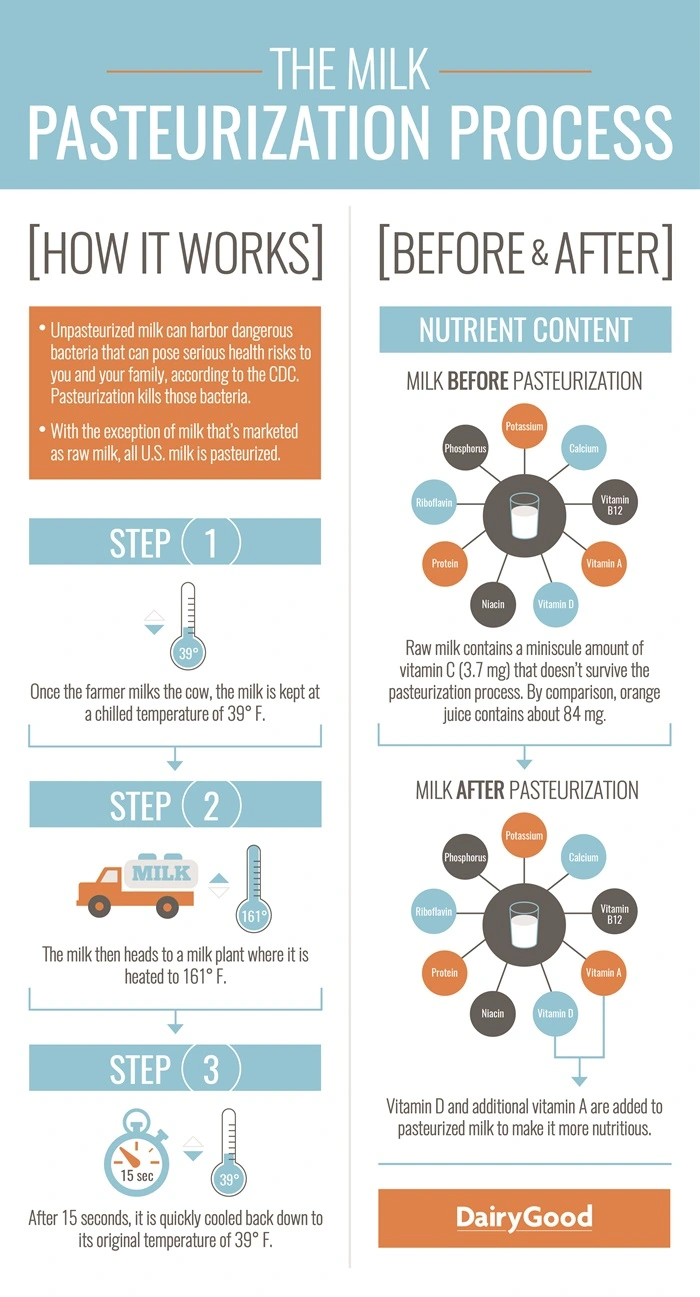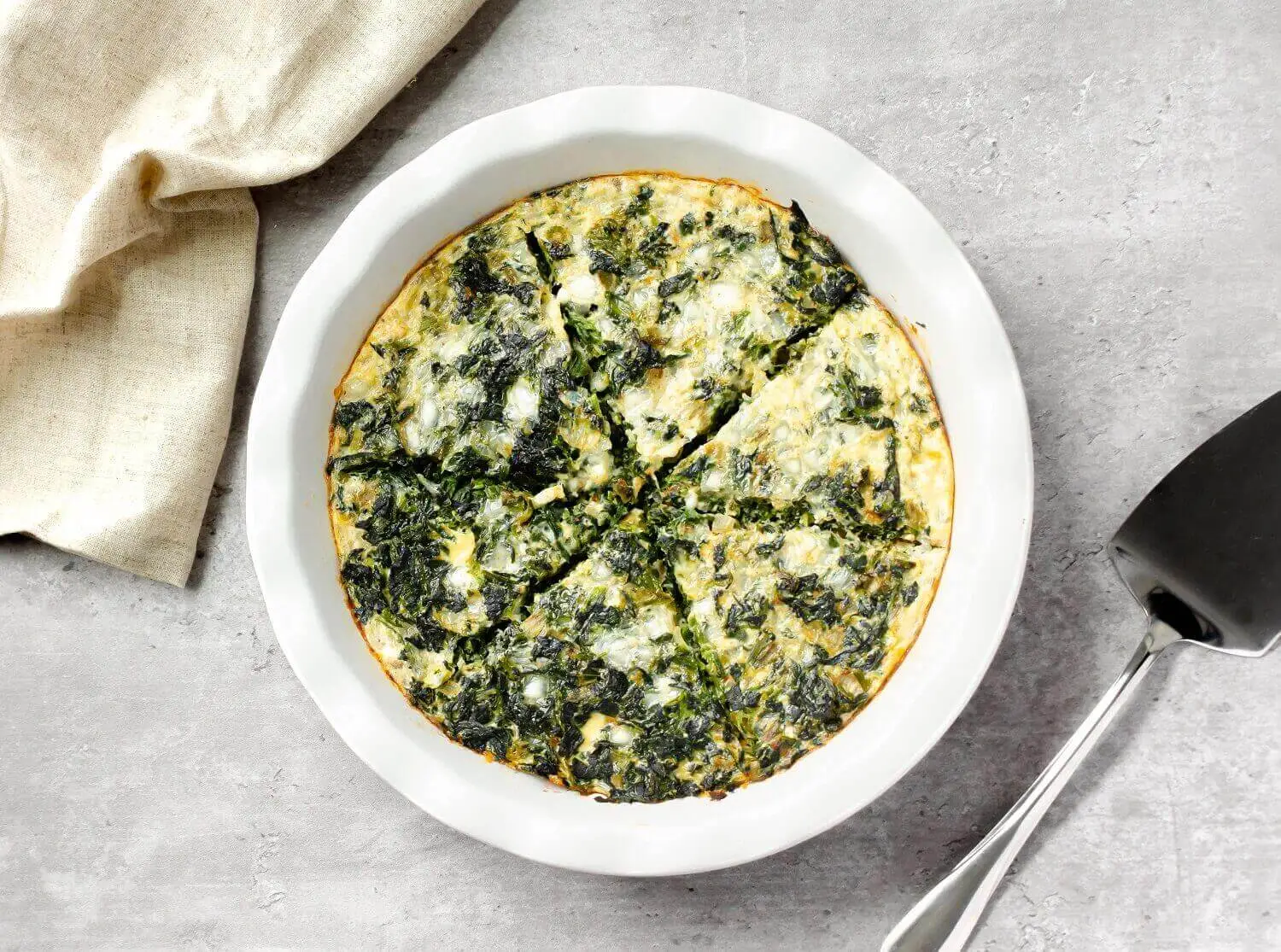Milk Pasteurization Process: What Is Pasteurized Milk & Why
From the cow to your cup, the U.S. dairy industry follows many strict government regulations, including milk pasteurization, to ensure that milk is safe to drink.
When it comes to ensuring the safety of milk and other dairy foods, University of Wisconsin-Madison food science professor John Lucey says pasteurization is the best line of defense.
“Pasteurization is an absolutely critical control point for making dairy products safe,” Lucey said. “There really isn’t another single aspect that is as important as it is. If there is a pathogen or anything in the milk that we don’t want, pasteurization destroys it. It is our industry’s shield.”
Over the past decades and centuries, as farmers learned to make more food with fewer resources, most of us have shifted from living on farms or in rural settings to cities. So, it’s only natural for us to wonder where our food comes from and how it was produced. Terms like “milk pasteurization” may be unfamiliar to some, and even a few who question what pasteurization means. The milk pasteurization process is one of the many strict government regulations that the U.S. dairy industry must meet to ensure milksafety.
But how did we get there and what does pasteurization mean? Find out below.
What is pasteurization?
Milk pasteurization is the process of applying a certain amount of heat for a set period of time in order to kill harmful bacteria that can be found in raw milk.
When was pasteurization invented?
About 160 years ago, Louis Pasteur developed the pasteurization process while he was tasked with finding practical solutions for problems such as keeping harmful bacteria at bay in different foods.
The dairy industry’s commitment to assuring safe products has a long history that dates to 1924 with the creation of the Standard Milk Ordinance developed by the U.S. Public Health Service. At that time, it wasn’t uncommon for people to become ill from typhoid fever, scarlet fever, tuberculosis and other illnesses caused by harmful bacteria in milk.
The ordinance created a consistent foundation for the quality and safety standards on farms, in dairy plants and during transportation that continue a century later under a new name: Pasteurized Milk Ordinance (PMO). Among the PMO’s many provisions are requirements for laboratory testing of milk and dairy products for quality and safety.
For every 2 billion servings of pasteurized milk or milk products consumed in the U.S., only about one person becomes ill, according to the Food and Drug Administration (FDA).
“My hope is that when people go to the store, they don’t have to think about the safety of milk,” said Cornell University food science professor Samuel Alcaine. “They’re just thinking about feeding their kids and they know milk is nutritious. Pasteurization ensures they don’t need to second guess that.”
How is milk pasteurized?
In most milk processing plants, chilled raw milk is heated by passing it between heated stainless-steel plates until it reaches 161 degrees Fahrenheit. It’s then held at that temperature for at least 15 seconds before it’s quickly cooled back to its original temperature of 39 degrees.
Here’s the “cool” part: One way the dairy industry saves energy involves using the heat of the heated pasteurized milk to warm the next batch of cold raw milk. Cold milk is then used to cool the heated pasteurized milk. By doing this, the industry uses heating and refrigeration energy more efficiently during the milk pasteurization process.
Why is milk pasteurized?
According to the Centers for Disease Control and Prevention (CDC), raw milk can harbor dangerous bacteria that can pose serious health risks to you and your family. The milk pasteurization process kills those bacteria.
The FDA and the CDC recommend drinking only pasteurized milk, which has been affirmed by leading health and medical groups, including the American Medical Association and the American Academy of Pediatrics.
Does pasteurization change milk?
No. According to the CDC, pasteurization does not significantly change the nutritional value of milk. In fact, you can get all of the nutritional benefits of drinking pasteurized milk without the risk of illness that comes with drinking raw milk.
When it comes to milk’s nutrients, all of milk’s minerals stay the same, but there is one small change when it comes to the vitamins. Raw milk contains a miniscule amount (less than 10% of the Recommended Daily Allowance, so it’s not considered a good source) of vitamin C, which doesn’t survive the pasteurization process.
“Pasteurization does not negatively affect the nutrition or bioavailability of components in milk,” Lucey said. “The milk is not sterilized or boiled. If we go through the major components of milk, pasteurization has zero effect on fats, zero effect on protein, and zero effect on the minerals.”
In addition, according to the CDC, if you’re thinking about drinking raw milk because you believe it’s a good source of beneficial bacteria like probiotics, you need to know that it isn’t. It could be harmful and make you sick. If you’re looking to enjoy a food or beverage with probiotics, experts such as registered dietitians suggest purchasing one that’s labeled for containing probiotics – rather than taking your chances.
At the end of the day, you can feel confident knowing that your milk is not only good for you, but safe, too. Long before milk arrives at the processing plant, dairy farmers do their part to begin the food safety journey.
Priority No. 1 for farmers is the health of their animals. Healthy cows produce high quality milk and farmers go to great lengths to assure their herds have nutritious feed, access to clean water, proper housing and regular medical care. These methods help keep bacteria in the milk at very low levels.
Dairy farmers also routinely sanitize equipment and every cow’s udder before the milking process begins. Lucey said surveys that examine pathogen levels at dairy farms consistently show a very low presence in the unpasteurized milk thanks to farmers’ efforts.
“Farmers do a great job of looking after the health of their animals, but farms are a place where bacteria reside,” Lucey said. “It means the raw milk itself, no matter how much care and work the farmer puts in, is likely to have some pathogens. Farmers are at a heightened alert to reduce the risk, but you can’t reduce the risk to zero. This is why we have pasteurization. It remains our gold standard.”
Learn more about the differences between raw and pasteurized milk. Additionally, milk's pasteurization process is different than its homogenization process. Learn more about homogenized milk here.
















